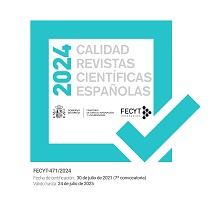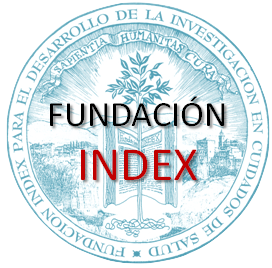Anxiety in primary care nursing technicians
Abstract
Objective: To evaluate the level of anxiety in nursing technicians of the Family Health Strategy, emphasizing the determinant aspects for the emergence of anxiety.Method: A descriptive, cross-sectional, quantitative approach, consisting of 28 Nursing Technicians, using the State-Trait Anxiety Inventory (STAI) as an instrument for data collection.
Results: Eight nursing technicians presented levels of high anxiety and 20 of low anxiety. There was an increase in the S-Anxiety Scale score during the activities, with statistical difference in relation to the moment before. The low remuneration, work overload and professional devaluation were pointed out as factors responsible for provoking the appearance of anxiety within the scope of work.
Conclusion: The study evidences a predominance of low anxiety among the study population; however, it was possible to detect factors triggering the anxiety, pointing out that such aspects may come to harm the peculiarity of the assistance to the user.
Downloads
-
Abstract918
-
PDF (Español (España))872
-
PDF (Português )872
-
PDF872
References
Souza DP, Silva GA, Paula EMJ. Atividades do técnico e do auxiliar de enfermagem numa unidade de clínica médica de um Hospital Universitário. EFDeportes Rev. Digital [Internet]. 2013; 15(166).
Ministério da Saúde (BR). Política Nacional de Atenção Básica. Brasília: Ministério da Saúde; 2006.
Ministério da Saúde (BR) – GABINETE DO MINISTRO. Portaria nº 2.488, de 21 de outubro de 2011. Brasília: Ministério da Saúde; 2011.
Moura GMSS, Inchauspe JAF, Agnol CMD, Magalhães AMM, Hoffmeister LV. Expectativas da equipe de enfermagem em relação à liderança. Acta paul. enferm.[Internet]. 2013; 26(2): 198-204.
Castilho CRN. A relação do processo de trabalho de enfermagem com o adoecimento desses profissionais: uma pesquisa bibliográfica [Monografia]. Rio Grande do Sul: Universidade Federal do Rio Grande do Sul; 2010.
Díaz Tobajas MC, Juarros Ortiz N, García Martínez B, Sáez Gavilán C. Estudio de la ansiedad del profesional de enfermeria de cuidados intensivos ante el proceso de la muerte. Enfermeria Global. 2007; 45: 246 – 255.
Andrade A, et al. Ansiedade associada a fatores sociodemográficos e clínicos de mulheres com síndrome da fibromialgia. Rev. dor[Internet]. 2013; 14(3): 200-203.
Nardi AE, Fontenelle LF, Crippa JAS. Novas tendências em transtornos de ansiedade. Rev. Bras. Psiquiatr.[Internet]. 2012; 34(1): 5-6.
Ries F, Vazquez CC, Mesa MCC, Andres OC. Relações entre ansiedade-traço e ansiedade-estado em competições esportivas. CPD[Internet]. 2012; 12(2): 9-16.
Spielbergert CD, Gorsuch RI, Lushene RE. Manual for the State-Trait Anxiety Inventory. Ca: Palo Alto Consulting Psychologists Press; 1970.
Biaggio AMB, Natalício L. Manual para o Inventário de Ansiedade Traço-Estado (IDATE). Rio de Janeiro: Centro Editor de Psicologia Aplicada (CEPA); 1979.
Almeida AAF, Behlau M, Leite JR. Correlação entre ansiedade e performance comunicativa. Rev. Soc. Bras. Fonoaudiol.[Internet].2011; 16(4): 384-389.
Sousa DA, Moreno AL, Gauer G, Manfro GG, Koller SH. Revisão sistemática de instrumentos para avaliação de ansiedade na população brasileira. Aval. Psicol. [Internet]. 2013; 12(3): 397-410.
Chaves Neto G, Braga JEF, Diniz MFFM,et al. Avaliação da Ansiedade em Enfermeiros da Atenção Básica. Revenferm UFPE online [Internet]. 2014; 8(12): 4345-52.
Gomes RK, Oliveira VB. Depressão, ansiedade e suporte social em profissionais de enfermagem. Bol. Psicol. [Internet]. 2013; 63(138): 23-33. Disponível em: http://pepsic.bvsalud.org/scielo.php?script=sci_arttext&pid=S0006-59432013000100004&lng=pt&nrm=iso.
Marchi KC, Bárbaro AM, Miasso AI, Tirapelli CR. Ansiedade e consumo de ansiolíticos entre estudantes de enfermagem de uma universidade pública. Rev. Eletr. Enf. [Internet]. 2013;15(3):731-739. Disponível em: http://dx.doi.org/10.5216/ree.v15i3.18924.
Duarte MLC, Avelhaneda JC, Parcianello RR. A saúde do trabalhador na estratégia de saúde da família: percepções da equipe de enfermagem. Cogitareenferm[Internet]. 2013; 18(2): 323-330. Disponível em: http://bases.bireme.br/cgi-bin/wxislind.exe/iah/online/?IsisScript=iah/iah.xis&src=google&base=LILACS&lang=p&nextAction=lnk&exprSearch=698908&indexSearch=ID.
Schmidt DRC, Dantas RAS, Marziale MHP. Ansiedade e depressão entre profissionais de enfermagem que atuam em blocos cirúrgicos. Rev. Esc. Enferm. USP [Internet]. 2011; 45(2): 487-493. Disponível em: http://www.revistas.usp.br/reeusp/article/view/40726/44015.
Oliveira V, Pereira T. Ansiedade, depressão e burnout em enfermeiros: Impacto do trabalho por turnos. Rev. Enf. Ref. [Internet]. 2012; 3(7): 43-54. Disponível em: http://www.scielo.mec.pt/scielo.php?script=sci_arttext&pid=S0874-02832012000200005&lng=pt&nrm=iso.
Forte ECN, Trombetta AP, Pires DEP, Gelbcke FL, Lino MM. Abordagens teóricas sobre a saúde do trabalhador de enfermagem: revisão integrativa. CogitareEnferm.[Internet]. 2014; 19(3). Disponível em: http://ojs.c3sl.ufpr.br/ojs/index.php/cogitare/article/view/35379.
Ribeiro RP, Martins JT, Marziale MHP, Robazzi MLCC. O adoecer pelo trabalho na enfermagem: uma revisão integrativa. Rev. Esc. Enferm. USP[Internet]. 2012; 46(2): 495-504. Disponível em: http://bases.bireme.br/cgi-bin/wxislind.exe/iah/online/?IsisScript=iah/iah.xis&base=LILACS&nextAction=lnk&lang=p&indexSearch=ID&exprSearch=625162&label=O%20adoecer%20pelo%20trabalho%20na%20enfermagem:%20uma%20revis%E3o%20integrativa.
Loureiro LMJ, Gameiro MGH. Interpretação crítica dos resultados estatísticos: para lá da significância estatística. Rev. Enfer. Refer.[Internet]. 2011; 3(3): 151-162. Disponível em: http://www.scielo.oces.mctes.pt/pdf/ref/v3n3/v3n3a16.pdf.
Meneghini F, Paz AA, Lautert L. Fatores ocupacionais associados aos componentes da síndrome de Burnout em trabalhadores de enfermagem. Texto and Contexto Enfermagem [Internet]. 2011; 20(2): 225. Disponível em: http://www.scielo.br/scielo.php?script=sci_arttext&pid=S0104-07072011000200002.
The works published in this magazine are subject to the following terms:
1. The Publications Service of the University of Murcia (the publisher) preserves the copyright of the published works, and encourages and allows the reuse of the works under the license for use stated in point 2.
© Servicio de Publicaciones, Universidad de Murcia, 2011 (© Publications Service, University of Murcia, 2011)
2. The works are published in the electronic edition of the journal under Creative Commons Reconocimiento-NoComercial-SinObraDerivada 3.0 España(texto legal) “ a Attribution-NonCommercial-NoDerivatives 3.0 Spain license (legal text)”. They can be copied, used, broadcasted, transmitted and publicly displayed, provided that: i) the authorship and original source of their publication (journal, publisher and URL) are cited; (ii) are not used for commercial purposes; iii) the existence and specifications of this license is mentioned.
3. Conditions of self-archiving. Authors are allowed and encouraged to electronically disseminate the pre-print (pre-reviewed ) and / or post-print (reviewed and accepted for publication) versions of their works prior to publication, as it ensures a wider circulation and dissemination which may lead to a possible increase in its mention and a higher scope among the academic community. RoMEO color: green.












